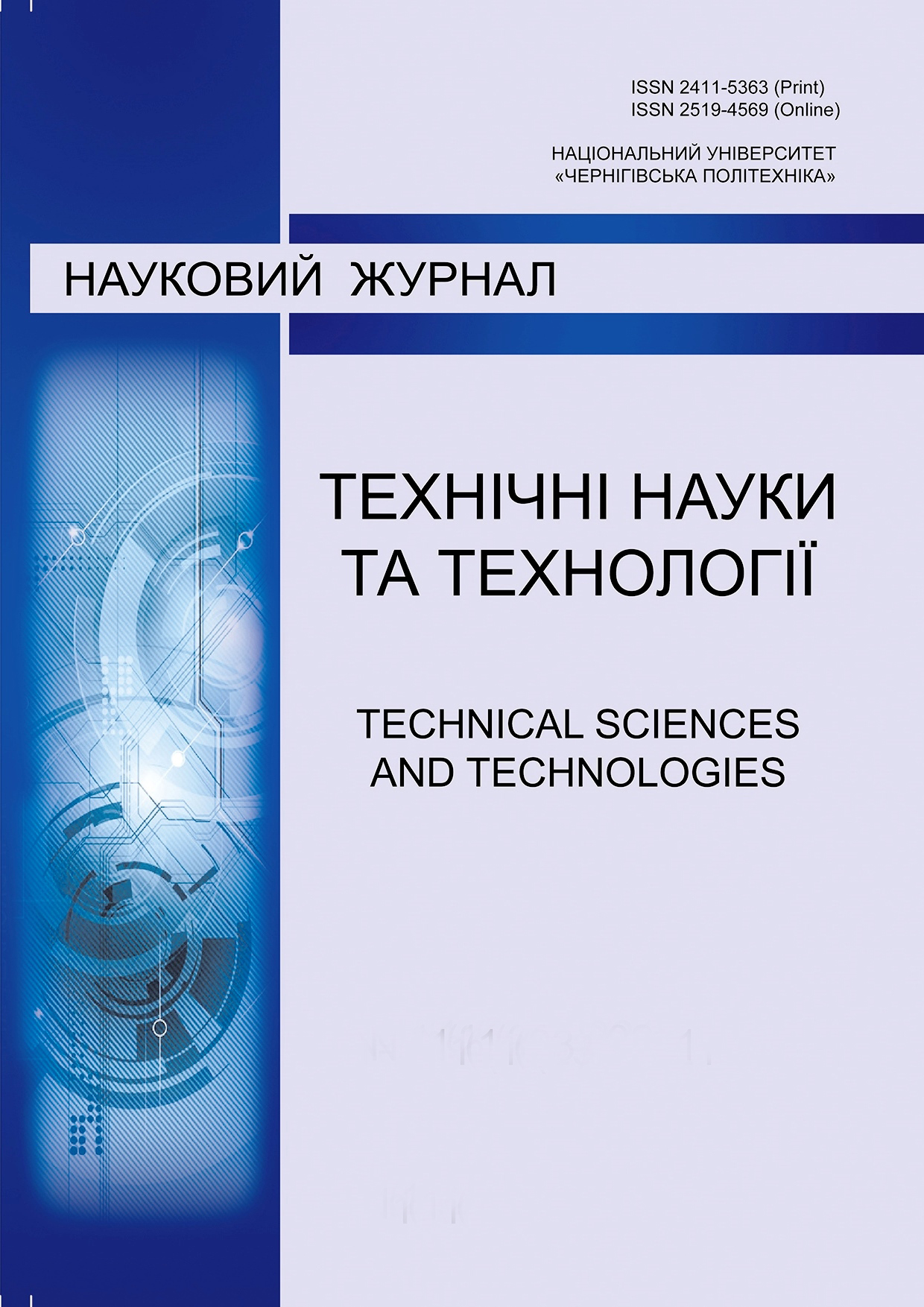Струмовий режим при електрохімічному 3d-друці виробів із міді
DOI:
https://doi.org/10.25140/2411-5363-2024-2(36)-181-193Ключові слова:
мідь; локальне електроосадження; електрохімічний 3D друк; нітратний електроліт; блискоутворюючі добавки;струмовий режимАнотація
Досліджено особливості використання нітратних електролітів міднення в системах локального електроосадження або електрохімічного 3D-друку. Запропоновано модель струмового режиму у електрохімічному 3D-друці, яка визначає його подібність до уніполярного імпульсного струмового режиму. Розраховані величини максимальної густини струму в імпульсі при електрохімічному 3D-друці, які відповідають значенням середньої швидкості осадження більшим за 0,5 А/дм2, перевищують значення граничних густин струму для стаціонарного процесу електроосадження міді в досліджуваному нітратному електроліті. На основі порівняльного дослідження морфології поверхні мідних осадів, отриманих при електроосадженні з використанням імпульсного режиму електролізу в стаціонарній комірці та отриманих в комірці з обертовим анодом, показана можливість моделювання струмового режиму при електрохімічному 3D-друці за допомогою імпульсних програмнокерованих джерел струму. Встановлено, що добавки Rubin (KIESOW OBERFLÄCHENCHEMIE GmbH &Co) у сульфатному електроліті міднення зберігають бликоутворюючий ефект при використанні нестаціонарних режимів електролізу. Виявлено, що введення в нітратний електроліт міднення гліцину не пригнічує процес електровідновлення нітрат-іонів, оскільки вихід за струмом є таким же, я в базовому електроліті без добавки і становить близько 80 %. Забезпечення формування більш дрібнокристалічної структури осаду при введенні 0,5 М гліцину може бути пов’язане зі зв’язування в комплекс одновалентної міді. Показана
можливість отримання електрохімічно надрукованих об’єктів з висотою профілю до 100 мкм із компактною дрібнокристалічною структурою металу за густини струму 2 А/дм2 в нітратному електроліті міднення з вмістом нітрату міді 300 г/л та при одночасному введенні блискоутворюючих добавок Rubin та гліцину.
Посилання
Seol, S.K., Kim, D., Lee, S., Kim, J. H., Chang, W.S., & Kim, J.T. (2015). Electrodepositionbased 3D Printing of Metallic Microarchitectures with Controlled Internal Structures. Small (Weinheim an der Bergstrasse, Germany), 11(32), 3896-3902. https://doi.org/10.1002/smll.201500177.
Said, R. A. (2003). Microfabrication by localized electrochemical deposition: experimental investigation and theoretical modelling. Nanotechnology, 14(5), 523. https://doi.org/10.1088/0957-4484/14/5/308.
Brant, A. M., Sundaram, M. M., & Kamaraj, A. B. (2015). Finite element simulation of localized electrochemical deposition for maskless electrochemical additive manufacturing. Journal of Manufacturing Science and Engineering, 137(1), 011018. https://doi.org/10.1115/1.4028198
Kamaraj, A., Lewis, S., & Sundaram, M. (2016). Numerical study of localized electrochemical deposition for micro electrochemical additive manufacturing. Procedia CIRP, 42, 788-792. https://doi.org/10.1016/j.procir.2016.02.320.
El‐Giar, E.M., Said, R.A., Bridges, G.E., & Thomson, D.J. (2000). Localized electrochemical deposition of copper microstructures. Journal of the Electrochemical Society, 147(2), 586. https:/doi.org/10.1149/1.1393237.
Suryavanshi, A.P., & Yu, M.F. (2006). Probe-based electrochemical fabrication of freestanding Cu nanowire array. Applied Physics Letters, 88(8). https://doi.org/10.1063/1.2177538
Habib, M. A., & Rahman, M. (2016). Performance of electrodes fabricated by localized electrochemical deposition (LECD) in micro-EDM operation on different workpiece materials. Journal of Manufacturing Processes, 24, 78-89. https://doi.org/10.1016/j.jmapro.2016.08.003.
Morsali, R., Qian, D., & Minary-Jolandan, M. (2019). Mechanisms of localized pulsed electrodeposition (L-PED) for microscale 3D printing of nanotwinned metals. Journal of The Electrochemical Society, 166(8), D354. https://doi.org/10.1149/2.0051910jes.
Bhuiyan, M. E. H., Wang, C., Arellano-Jimenez, M. J., Waliullah, M., Quevedo-Lopez, M., Bernal, R., & Minary-Jolandan, M. (2023). Electrical property-microstructure of copper interconnects printed by localized pulsed electrodeposition (L-PED). Materials Letters, 330, 133364. https://doi.org/10.1016/j.matlet.2022.133364.
Habib, M. A., Gan, S. W., & Rahman, M. (2009). Fabrication of complex shape electrodes by localized electrochemical deposition. Journal of Materials Processing Technology, 209(9), 4453-4458. https://doi.org/10.1016/j.jmatprotec.2008.10.041.
Vasyliev, G., Vorobyova, V., Uschapovskiy, D., Kotyk, M., & Linyucheva, O. (2023). Influence of polarization curve slope on the accuracy of local copper electrodeposition from sulphate electrolyte. Journal of Electrochemical Science and Engineering, 13(6), 971-980. https:/doi.org/10.5599/jese.1899.
Wang, G.F., Tian, Z.J., Liu, Z.D., Shen, L.D., & Zhu, J. (2015). Preparation of nickel parts by jet electro-deposition technique based on templates and grinding. International Journal of Electrochemical Science, 10(8), 6844-6854. https://doi.org/10.1016/S1452-3981(23)06766-4.
Kim, H., Kim, J. G., Park, J.W., & Chu, C.N. (2018). Selective copper metallization of nonconductive materials using jet-circulating electrodeposition. Precision Engineering, 51, 153-159. https://doi.org/10.1016/j.precisioneng.2017.08.005.
Hossain Bhuiyan, M.E., Moreno, S., Wang, C., & Minary-Jolandan, M. (2021). Interconnect fabrication by electroless plating on 3D-printed electroplated patterns. ACS Applied Materials & Interfaces, 13(16), 19271-19281. https://doi.org/10.1021/acsami.1c01890.
Kamaraj, A. B., & Sundaram, M. (2018). A study on the effect of inter-electrode gap and pulse voltage on current density in electrochemical additive manufacturing. Journal of Applied Electrochemistry, 48, 463-469. https://doi.org/10.1007/s10800-018-1177-3.
Manukyan, N., Kamaraj, A., & Sundaram, M. (2019). Localized electrochemical deposition using ultra-high frequency pulsed power. Procedia Manufacturing, 34, 197-204. https://doi.org/10.1016/j.promfg.2019.06.139
Ushchapovskyi, D., Vorobiova, V., Plivak, O., Motroniuk, T., & Vasyliev, H. (2022). Obmezhennia nitratnoho elektrolitu midnennia dlia shvydkisnoho elektrokhimichnoho 3D-druku [Limitations of copper nitrate electrolyte for high-speed electrochemical 3D printing]. Visnyk Cherkaskoho
derzhavnoho tekhnolohichnoho universytetu – Bulletin of the Cherkasy State Technological University, (4), 77–87. https://doi.org/10.24025/2306-4412.4.2022.265832.
Ushchapovskyi, D.Yu., Linyuchev, O.G., Motronyuk, T.I., Linyucheva, O.V., Bilchenko, O.Yu. (2019). Background technology for purification of polluted aquatic environment and regeneration of concentrated waste nitrate-chloride-sulfate industrial solutions. KPI Science News, 5-6, 95-101.
https://doi.org/10.20535/kpi-sn.2019.5-6.188444.
Pravda, A.O. (2016). Fiziko-khimicheskie zakonomernosti vliianiia dobavok razlichnoi prirody na razriad-ionizatsiiu medi v nizkokontsentrirovannykh nitratnykh rastvorakh [Physico-chemical regularities of the influence of additives of various nature on the discharge-ionization of copper in lowconcentration
nitrate solutions] [PhD in Chemical Sciences, Kharkiv National University named after V. N. Karazin]. https://core.ac.uk/download/pdf/154324054.pdf.
Pravda, A.A., Radchenkova, A.P., Laryn, V.Y. (2008). Vliianie glitsina na protsess elektroosazhdeniia medi z nitratnogo elektrolitu [Influence of glycine on the processes of copper electroplating with the help of nitrate containing electrolyte]. Visnyk Kharkivskoho natsionalnoho universytetu im. V.
N. Karazina – Bulletin of Kharkiv National University named after V.N. Karazin, 16(39), 353–356. https://ekhnuir.karazin.ua/handle/123456789/3876.
Motronyuk T. I. (1989). Elektroosazhdenie medi iz skorostnykh nitratnykh elektrolitov [Electrodeposition of copper from high-speed nitrate electrolytes]. [PhD Technical Sciences, Kyiv Polytechnic Institute].
Ménager, L., Soueidan, M., Allard, B., Bley, V., & Schlegel, B. (2010). A lab-scale alternative interconnection solution of semiconductor dice compatible with power modules 3-D integration. IEEE Transactions on Power Electronics, 25(7), 1667-1670. https://doi.org/10.1109/TPEL.2010.2041557.
##submission.downloads##
Опубліковано
Як цитувати
Номер
Розділ
Ліцензія

Ця робота ліцензується відповідно до Creative Commons Attribution-NonCommercial 4.0 International License.


